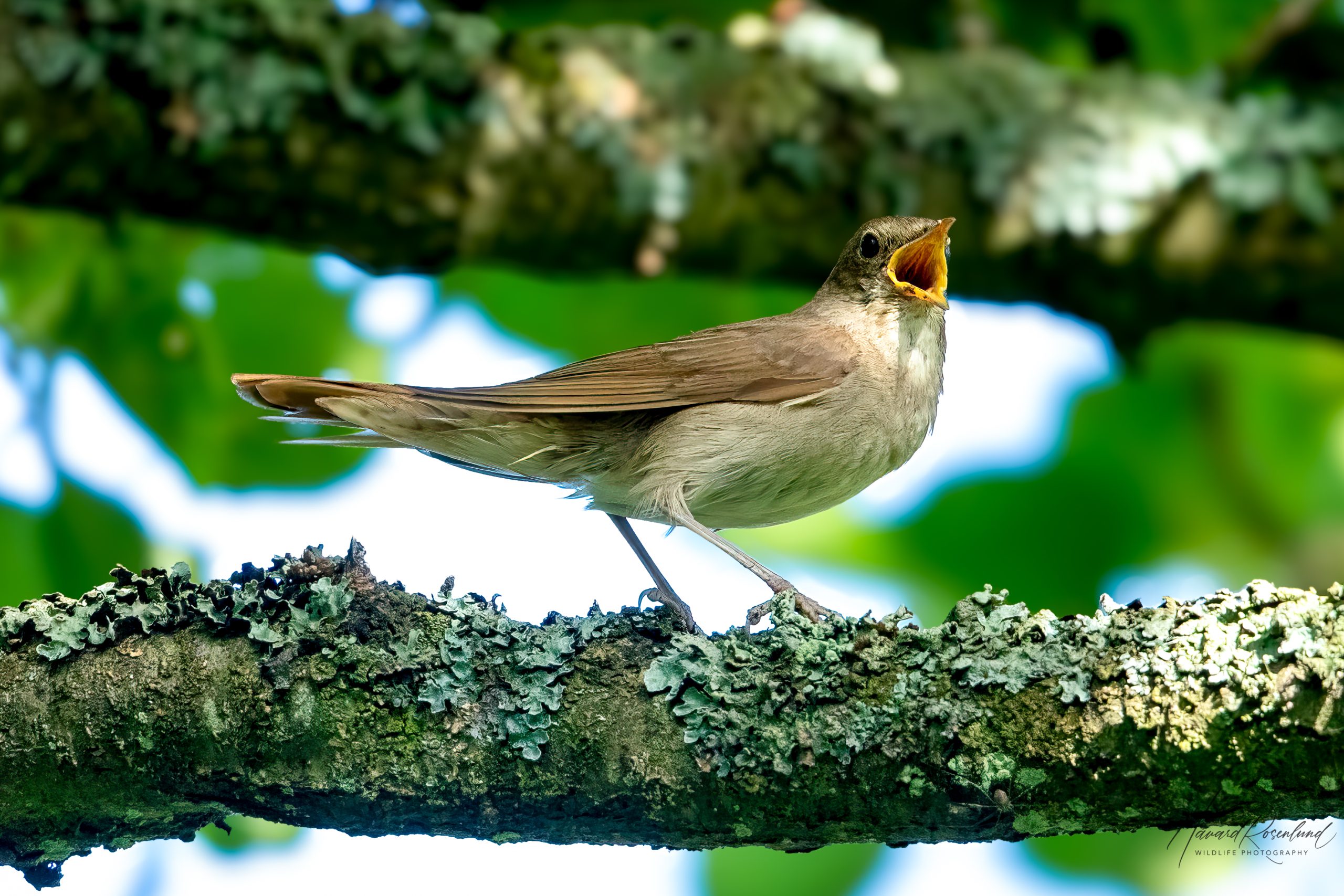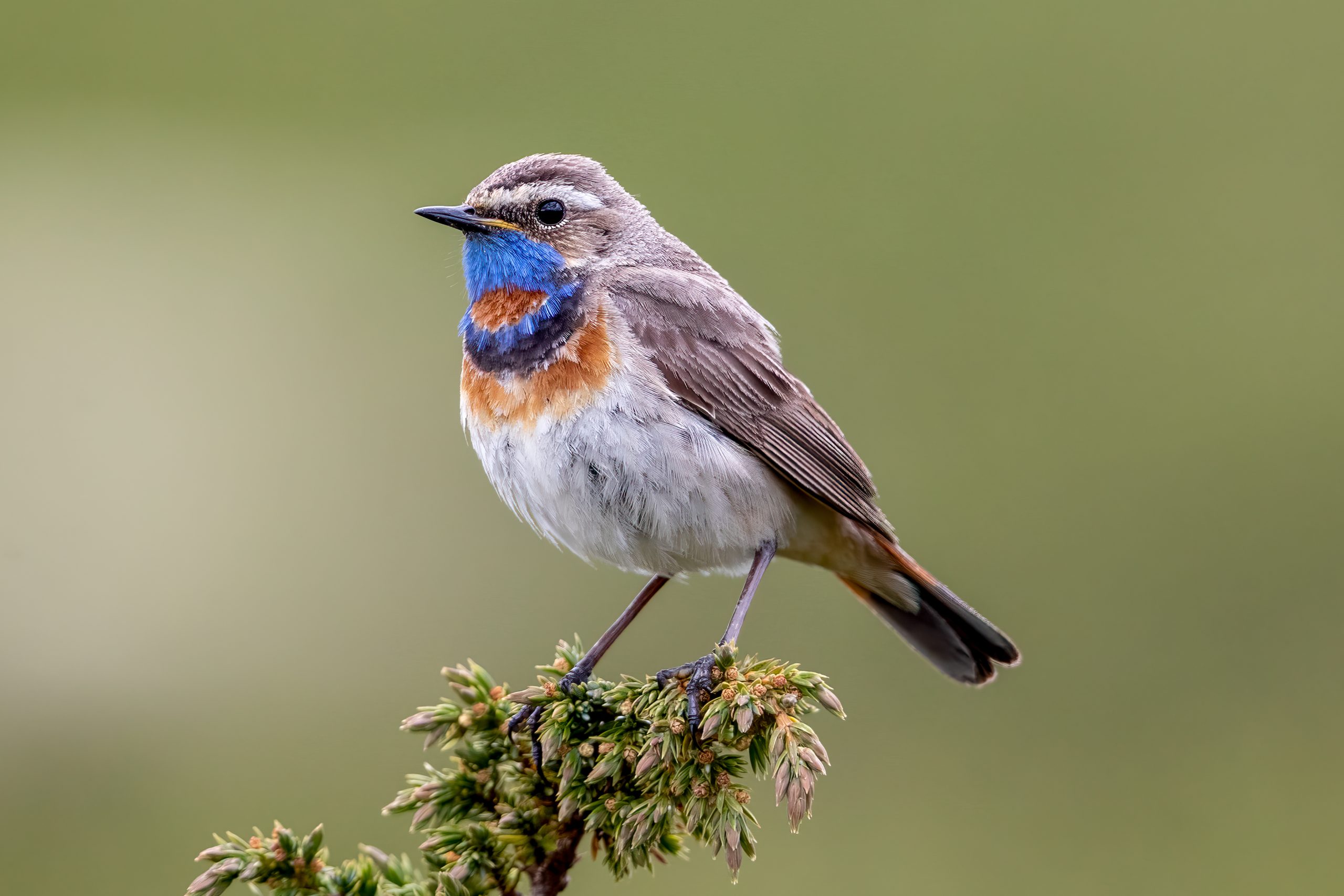Thrush Nightingale
(Luscinia luscinia)
Description
The thrush nightingale (Luscinia luscinia) is a small passerine bird in the Old World flycatcher family found across Europe and western Asia. It measures approximately 15-16.5 cm (5.9-6.5 in) in length, with a wingspan of about 24-26 cm (9.4-10.2 in), and weighs around 20-30 grams (0.7-1.1 oz). Its plumage is characterized by a dull brown upper body, with a slightly reddish tail, and a buff underbody. This species is very similar to the common nightingale (Luscinia megarhynchos), but it can be distinguished by being less reddish brown in coloration.
Thrush nightingales are known for their powerful and varied song, which is a complex series of whistles, trills, and buzzes. It is often described as more monotonous and harsher than that of the common nightingale. The males sing both day and night to establish territory and attract females during the breeding season.
Diet & habitat
Thrush nightingales thrive in dense, wet, and often swampy habitats such as deciduous and mixed forests, particularly near water bodies like rivers, lakes, and marshes. They prefer habitats with thick underbrush, where they can find ample cover and food. This species is primarily insectivorous, feeding on a wide variety of invertebrates, including insects, spiders, and worms. They forage on the ground or in low vegetation, using a method known as “gleaning,” where they pick prey from foliage or the forest floor. During the autumn, they also consume berries and other fruits to prepare for migration.
Migration
The thrush nightingale is a long-distance migrant. It breeds in Europe and western Asia and migrates to sub-Saharan Africa for the winter. Migration typically begins in late summer or early autumn, with the return journey occurring in spring. Thrush nightingales travel individually or in loose flocks, covering thousands of kilometers during their annual migration. Their precise wintering areas range from southern Tanzania to northeastern South Africa.
Nesting
Breeding occurs from late May to early July. Males arrive first at the breeding grounds to establish territories and sing to attract females. The thrush nightingale builds a cup-shaped nest near the ground, hidden in dense vegetation. The nest is constructed from leaves, grasses, and moss, lined with finer materials. The female lays 4-6 eggs, which she incubates alone for about 12-14 days. After hatching, both parents feed the chicks, which fledge after about 10-12 days. The fledglings remain dependent on their parents for a short period after leaving the nest, continuing to be fed as they learn to forage on their own.
Status
The thrush nightingale is currently listed as least concern by the IUCN Red List. Its population is stable across its range, although localized declines have been noted due to habitat loss and degradation, particularly in its breeding grounds. Conservation efforts focus on preserving and restoring wetland habitats to support breeding populations.






